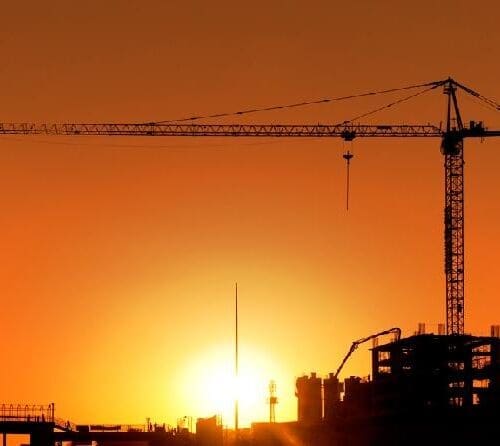New UK-India trade deal offers optimism and opportunity for construction industry
May 2025The global economy has recently been holding its breath with a raft of new tariffs being introduced by, and in response to, the President Trump administration; not to mention the ongoing conflicts around the world. It is therefore a relief to receive some good news in the form of the UK-India trade deal which promises growth and opportunities for UK businesses.
While limited details of the trade deal terms have been released; we’ve summarised below why it could be especially beneficial for our clients and the wider construction industry.
India as a trading partner
India is the fifth largest economy in the world and growing at the fastest rate in the G20. Yet despite its scale, it represents one of the hardest markets to break into, with high tariffs and regulation creating substantial barriers to foreign businesses.
This trade deal could ease those barriers, opening up a high growth market that has long been difficult to access – offering substantial potential for UK businesses.
The UK-India trade deal
The UK government is touting the deal as “the best deal that any country has ever agreed with India.” The overarching principles are that red tape will be cut, and tariffs will be substantially reduced. This will make India a more accessible market to trade in for UK businesses more generally.
However, there are signs that the construction industry is set to be a key beneficiary of the trade deal. The telecoms and construction services sectors have been specifically referred to by the UK government as sectors which will benefit from “the certainty they need to expand into India and take advantage of its rapidly growing economy.” UK businesses providing construction services will not face restrictions on the number of businesses able to operate in India and will receive the same treatment by the Indian government as if they were Indian businesses.
Most notably, UK businesses will now have guaranteed access to Indian government procurement processes, with opportunities to bid for public contracts. India reportedly “spends an estimated 20% of its GDP on public procurement” and with “approximately 40,000 tenders per year with a value of at least £38 billion”, this aspect of the deal suggests UK construction businesses will have access to substantial new opportunities. Whether this results in successful bids is something we will monitor.
Travel will be made easier for UK professionals visiting India for business. Engineering and architectural businesses are specifically referenced as those who are set to benefit, which emphasises that the UK government sees this deal as a catalyst to make trade and business in India more viable for construction professionals.
It appears that the trade deal may also bring India more aligned with UK priorities, to make day-to-day business and transactions more achievable. For instance, there are sections to the deal to combat trade distortion and corruption, promote regulatory transparency, improve protection of intellectual property rights which are key to securing interests of UK businesses looking to grow abroad, and progress India’s move towards a greener, more sustainable economy, with net zero being the end goal.
So, what’s next…?
Now initial negotiations have concluded, UK and India will work together to draft a legal text. Once both the UK and India have ratified the text, it will come into force. The UK government has said the trade deal will make it “quicker, cheaper and easier to trade from the first day the deal comes into force.” Prospective opportunities should therefore be considered and investigated in anticipation.
We will be monitoring progress of the trade deal and report further details as they are released. Similarly, we will be ready to support and advise our clients on any opportunities and ventures which arise from the trade deal. If you have any questions or require assistance, please do not hesitate to contact the authors of this article.
The information provided and quoted in this article has been sourced from the UK government website: UK-India trade deal: conclusion summary – GOV.UK
Download PDF








